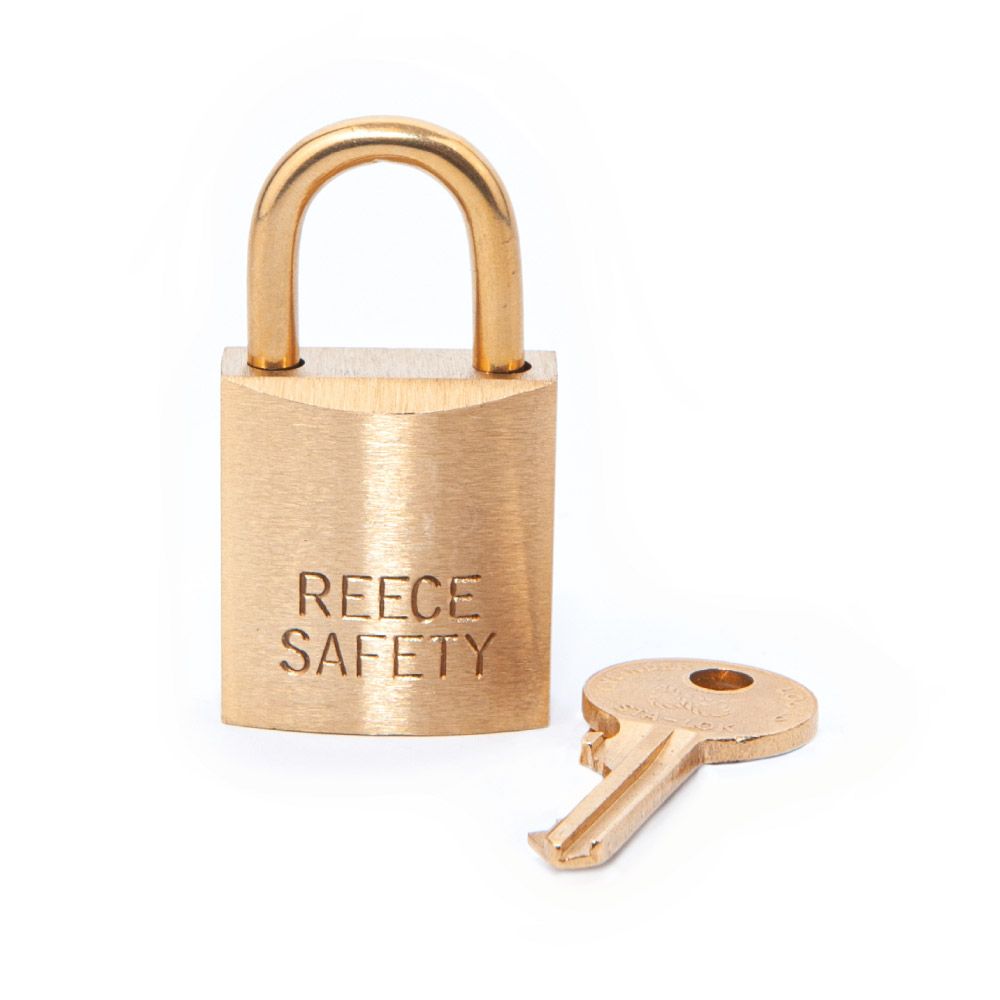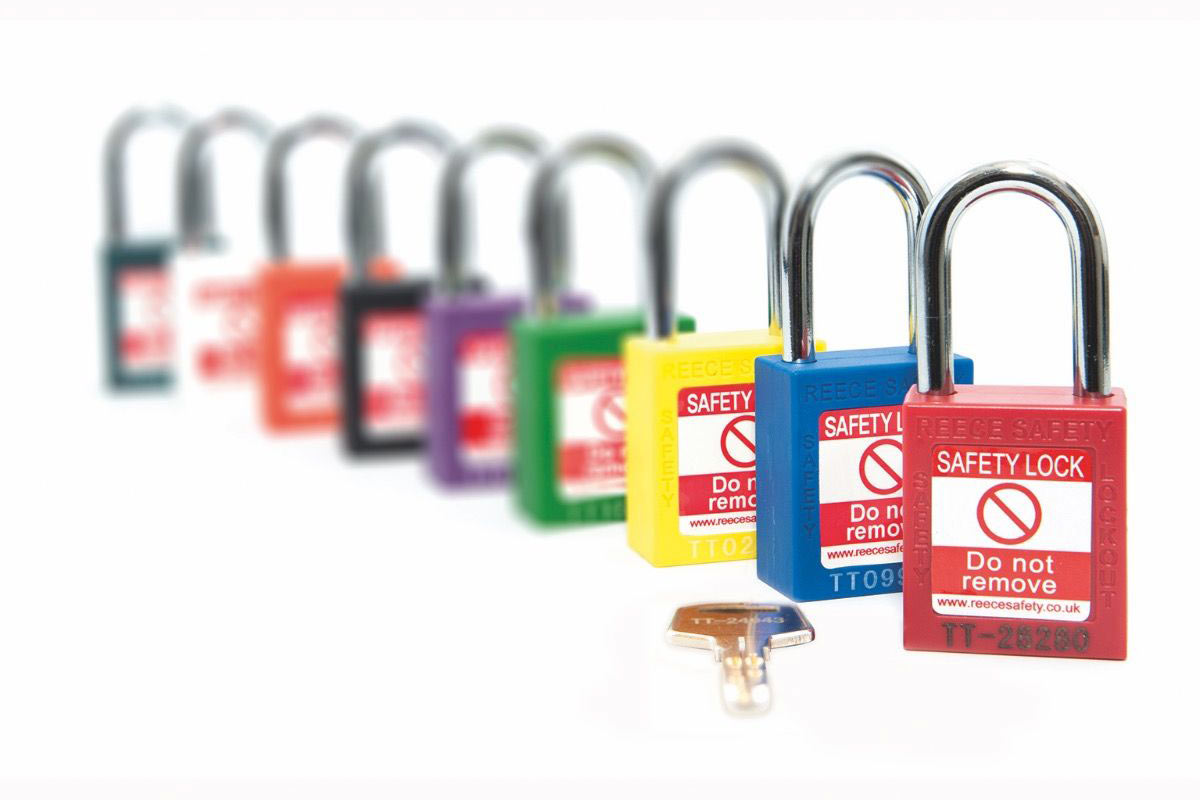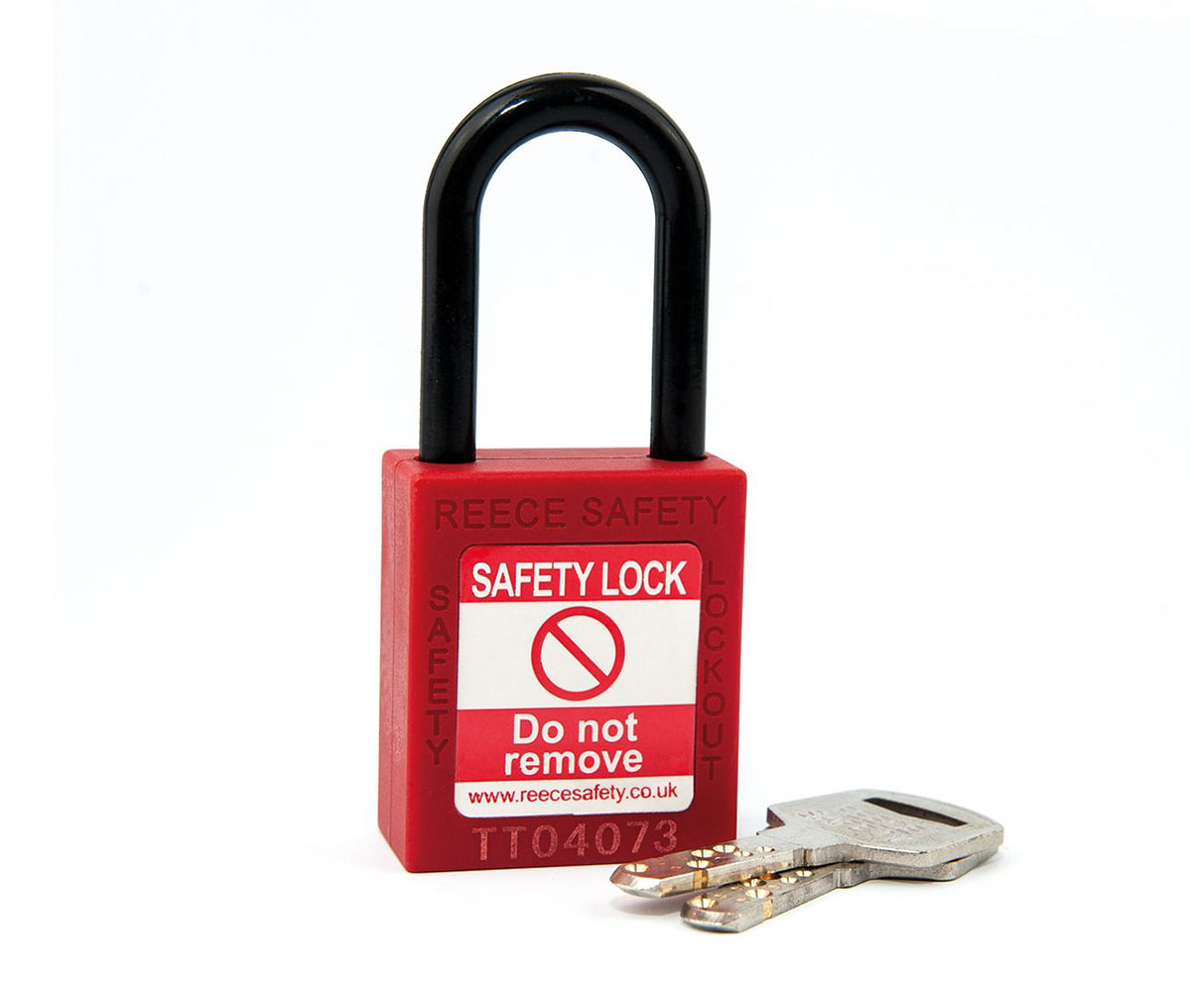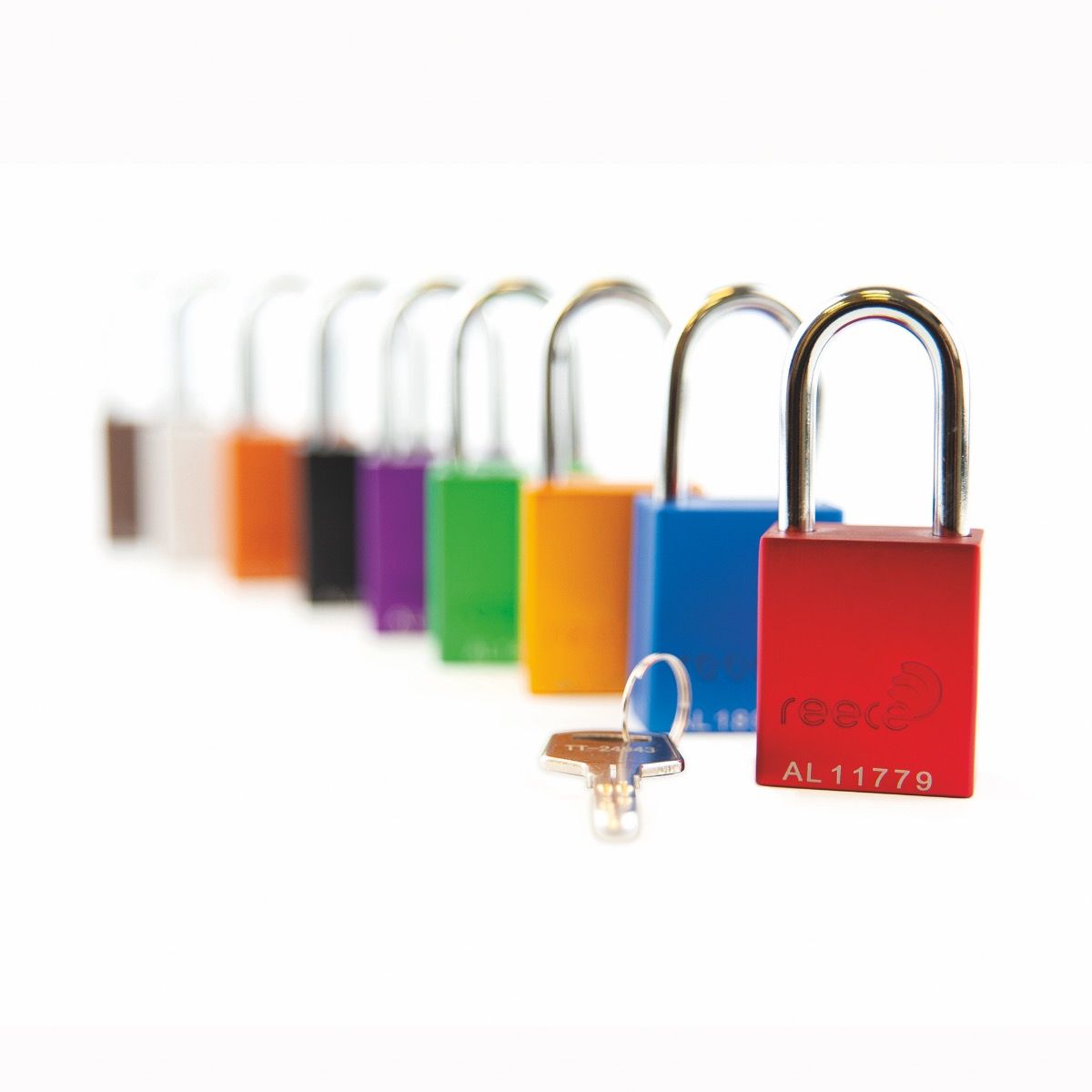Safety padlocks – everything you need to know
Safety padlocks are the principal part of any reputable Lockout Tagout Tryout system. While representing a pimple in volume compared to security padlocks, they perform a critical role in keeping people safe. They are available in various materials, shapes, and sizes but there are some common points across all products that are critical in how well they work.
This article describes the options available and provides a subjective view of the Pros and Cons of each type. We will also cover some of the specialist variants that are developed for more specialist applications. More importantly, it describes the objective features that dictate the successful operation of the padlock in this critical application.
Safety padlock vs Security Padlock
The majority of padlocks in circulation are of the security type where strength and theft deterrence are the primary criteria needing to be satisfied. A common misconception is that these will work well as Safety padlocks which could end very badly and may result in major injury or worse. The problem lies in the fact that most people need very few security padlocks and therefore they will work in a very small range of Differs which are chosen to be greatly different from one another for better security. The higher number of pins is simply to reduce the ease of the lock being picked.
It is highly likely that several basic security locks chosen at random will in fact be opened by the same key as the high number of differs is reserved for specialist applications. This would be catastrophic for a safety system. A safety padlock does not need to be highly secure or even that strong – it needs to be strong enough to ensure removal is only through a deliberate act. A softer shackle benefits the lock as emergency removal is done by cutting the shackle. The crucial and unique aspect of a safety padlock is the vast number of guaranteed differs where no crossover between locks is possible. Each unique lock number should then be stamped or engraved onto the lock and key to identify this quickly as multiple locks will often be used on an equipment isolation.
The popular options of safety padlock are:
We can go through these and provide a quick view on the pluses and minuses of each one which may help your selection process. The information provided is provided for those safety padlocks supplied through Reece Safety and we cannot speak for the merits of other manufacturers.
Brass body and brass shackle

This is the original safety padlock used for many years in the UK and dates back to the Utility companies, British Steel and the Quarrying sector as some of the original early adopters and leaders in the implementation of Lockout Tagout. A little-known fact is that the brass shackle is actually to provide an “anti-spark” feature to improve safety when in electrical applications. The brass padlocks are very compact and robust and the lock number is stamped on both the side of the lock and key head. Normally these are 5 pin locks which then rely on multiple key sections to extend the numbers of differs towards 80,000.
A negative of this type of padlock is the “usefulness” of such a lock at home and many safety padlocks guard the country's sheds as well as appearing on bridges as part of the current padlocking trend. One more functional aspect in the safety application is the longevity of the paint used to colour code the locks between departments, trades or contractors. Clip-on plastic bodies can give a solution but this offsets some of the benefits of compactness.
Different sizes of body and shackle length are available as standard products and it is always possible to have an extended shackle to suit a critical need if required.
Nylon body with steel shackle

The origin of this type of safety padlock is from the USA where one of the few standards for safety padlocks exists – namely OSHA 1910.147 where the need for colours, to identify differences in use, are specified as a requirement. This type of lock has now proven popular due to a lighter weight and the obvious colour coding which provides a very good visual presence in a safety environment. Labels are now applied to either side of the lock to show ownership and further warnings and the lock number is either etched or engraved into the body and keys. The locks are generally bulkier than their brass counterparts and the lower security nature often prevents them finding their way onto sheds and other home security.
Our nylon bodied safety padlocks utilize a dimple key cut system which produces a standard of 20,000 differs which are now being pushed to up to 100,000 differs in popular colours.
The standard safety padlock used around the world is a 38mm width RED bodied 38mm shackle clearance safety padlock. Compact padlocks are available to give the benefits of lower weight which might suit high-level working where the falling object risk is greater. Switch panels with restricted dimensions is also a driver here – the payoff is generally a lower number of differs due to the compact nature.
Nylon body with nylon shackle

This padlock is a derivative of the above and it designed to support the needs of electrical isolation. In this application it is common to be working in a consumer unit or switch panel where live breakers are present alongside the dead circuit being locked out. To eliminate the risk of accidental contact of a conductive material with a live connector the nylon shackle is employed. The glass reinforced shackle must withstand high forces during use and must not shatter when cold.
Our design of nylon shackle contains a steel insert at the base of the shackle to avoid misuse which can lead to the removal of the key in such padlocks. The same dimple key system is used in this padlock type. Much less popular than their steel shackled counterparts they have proven popular in the Japanese market as they are lighter weight.
Aluminium body with steel shackle

This safety padlock certainly originates from the USA and particularly the Southern States where the oil industry drives the product styles used. Once again driven by the OSHA standard regards the need for colours which are produced through a bright anodized finish with 9 colours available – red being again the most popular. The benefits of the aluminium body over the nylon equivalent is the robustness of the material which is also relatively lightweight. The bright anodized surface can be laser etched to great effect with logos if required. The bright finish dissuades people using them for home security as they draw too much attention.
Our dimple key cutting is utilized on this padlock and this creates 20,000 differs with an option to extend to 100,000 when needed.
Stainless steel with stainless steel shackle
This is a very specialist solution with a much more expensive padlock. It is much less popular and predominantly used in longer term outdoor isolations in oil and gas installations. The solid stainless steel body can only be inscribed due to the hard surface and the internals are still made from brass. However, the materials combination of body and shackle give outstanding longevity in more hostile environments.
Padlock Customisation
A well structured LOTOTO system will take account of PERSONAL, PLANT and CONTRACTOR padlocks with separate considerations for each. Customisation of padlocks is very common and necessary to make the good practice of safe isolation stick. Common examples of customisation are:
- Engraving of employee names and clock numbers
- Painting of brass lock bodies to match work trades or department demarcation
- Engraving isolation point or plant name codes onto plant locks to assign a lock to each point
- Painted key heads to match padlock body colours
- Padlocks with danger boards attached – the danger board is very visible and could be engraved with employee names
- Deeply Engraved locks with coloured paint to INFILL to distinguish between sections or employees
- Clip on coloured plastic bodies for brass padlocks – still shows the lock number but gives a permanent colour coding
- Brass padlocks with chain permanently attached to create a longer and flexible shackle used in valve lockouts
- Printed labels with employee ID photo to assist visual recognition in multi-language site
- Contractor locks engraved with sequential numbers to allow a close system of issuing and receipt to link with Permit To Work procedure
Safety Padlock storage
So often people will buy many padlocks to suit a lockout system and then not consider how these locks will be used in practice. We have seen many “two bag” storage methods where one is for locks and one is for keys – customary practice is what gives lockout a bad name for slowing the job down! These locks are a very valuable commodity and making them easy to access is vital to ensure their use. A consideration must be given to padlock storage which also takes account of where and how the locks are to be used or issued. Padlock cabinets are available to store padlocks securely and options are available for cabinets with clearview windows to show contents when closed.
A set of locks for contractors should be stored on a lockout station where the locks are numbered and this is repeated on the wall mounted lockout station. The locks are issued and easily seen as missing to show the job not completed or taken by the contractor – a simple job sign off sheet will always get the locks back.
Plant locks for complex isolation could be stored on a lockout station in captive eyelets and the keys kept close on a key cabinet only accessed by the responsible person heading up the complex isolation. A group lockout box is then used to store the plant keys and kept locked with personal locks.
We can produce any design or size of lockout station with our in house design and production team. A well considered lockout station will promote the safety and corporate culture, encourage use and stand the test of time better in keeping the products available.
Key tags and key management
The funniest method of storage we have seen for common plant locks is a coffee cup! The operating procedure for lockout was to find a lock and then find they key in the mug that fitted the padlock. With a little more time and relatively small expense there can be much better systems applied.
Key tags are available in different types to suit preferences and the amount of information wanted on the tag – adding plant number or employee name makes the identification so much easier. We recommend using a key cabinet for the plant lock keys and this further improves the process. Often the key cabinet is then combined with a bespoke lockout station, as mentioned above, where the plant locks are then held on captive hooks and the Authorised Person is given the key to the cabinet as part of a Standard Operating Procedure – suddenly you have introduced the best forms of control AND made the process ten times faster!
Contractor padlocks
The management of contractors is always a tricky area to manage the responsibilities of the site owner for the work being carried out by the third party. Due to liabilities it is now common for the site owner to issue safety padlocks as part of the permit to work and these must then be signed back in by the permit issuer once the work is completed and the work permit is returned.
We always recommend this approach is followed and that the safety padlocks are numbered and stored on a lockout station actually locked to the board on captive hooks. Without this strict control the safety padlocks will disappear, the reliance is then with the contractor and the ensuing risk of injury is not controlled. This could result in major safety breaches, possible injury or death and massive legal consequences for the site owner through negligence. It is such a simple process and one we see causing many sites difficulties.
Key Control/Lock Control
This is the biggest difference between Safety Padlocks and Security Padlocks. It is also the differentiator between a quality safety padlock and the rest. It is essential that the management of lock numbers is in place to ensure the safety of those working on site and undertaking operations, maintenance, cleaning and contracting.
High numbers of differs is a major feature of a safety padlock as described previously. Controlling this high number of differs is then essential to benefit from this feature. Without close control it would be wrong to assume that the odds of repeats are minimal as we have seen many examples where padlocks purchased without lock number control overlap with others. We automatically control and records lock numbers for all brass padlocks sold using our Sentinel database and this free service can be requested for any locks we sell. We will manage across a group with multiple sites and this great helps group procurement where sites buy in isolation.
Safety Padlocks should have the lock number shown on each padlock and key – this should then be shown on the box the padlock is supplied in. This is a very difficult thing to do in manufacture and is an early indication that lock control is not understood by the manufacturer of the padlock. The clear visibility of the lock number allows good management of locks on site as well as easy identification when multiple locks are used and not engraved separately.
Padlock maintenance
Padlock maintenance is an often-overlooked element of this subject. Dust is a common component across many industries we serve, and dust can penetrate the inner workings and jam a spring which could then overlap with another padlock – the odds still remain small but It can happen! Dust can also sometimes cause bigger problems for safety padlocks – the higher number of pins needed to create the high number of differs creates a larger frictional area and the ingress of dust can soon cause keys to jam. This is made worse due to the precision tolerances needed to avoid crossover between locks. We have developed our designs to make the key insertion and removal as easy as possible without compromise to integrity of safety.
Also to consider is the fact that the workings of a padlock involve metal-to-metal parts moving against one another and, as brass is relatively soft, this will wear the small components through time and this can also lead to a crossover over time. It should be expected that a replacement programme for padlocks is necessary to maintain the integrity of safe systems of work.
 UK
UK US
US









